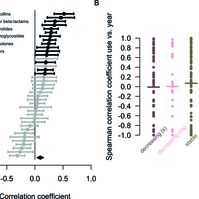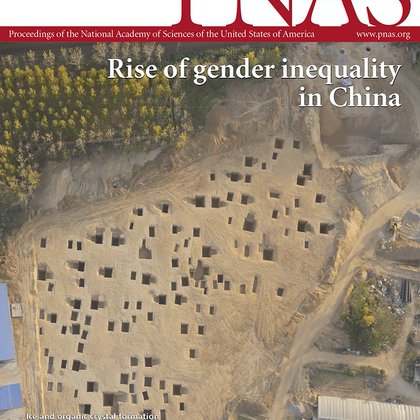
Sonja Lehtinen
@sonjaklehtinen
Followers
1K
Following
153
Media
1
Statuses
76
Epidemiology, evolution and antibiotic resistance at the University of Lausanne. https://t.co/C1rqq94szm
Joined July 2014
We're recruiting! Multiple postdoc and PhD positions at the University of Lausanne. Official adverts will be out soon, but you can have a sneak peek. Informal enquires are encouraged - if you like our papers, we want to hear from you!
18
271
674
Two Postdocs (Lausanne, Switzerland) Bacterial genomics in the context of evolutionary epidemiology, with potential projects including antibiotic resistance, HGT and plasmid dynamics. with @sonjaklehtinen at University of Lausanne More details:
0
5
4
Big thanks to @ECDC_EU for collecting these data, it's super cool to be able to look at long term trends like this. And to co-authors Martin Emons and @FrancoisJB
0
0
0
And why is antibiotic consumption such a weak predictor of resistance? Looking at consumption at the country level is quite a coarse-grained measure, so this could be part of the explanation.
1
0
1
So what explains the stabilisation? Lots of ideas have been proposed (some by us), including host population structure, bacterial population structure, within-host dynamics and acquisition-selection balance. But no fully satisfactory explanation yet.
1
0
0
Overall, there is an association between a country’s antibiotic consumption and both the plateau frequency and the rate of increase. But the association is still weak and variable.
1
0
0
We thought this might be because looking at just resistance frequency doesn’t account for whether the frequency is at equilibrium w.r.t. antibiotic consumption (i.e. already plateaued or still increasing).
1
0
0
We also looked at whether antibiotic consumption predicts the level at which resistance stabilises and the initial rate of increase. Previous studies have shown a correlation between countries/states’ antibiotic consumption and resistance frequency, but this association is weak.
1
0
0
The majority of trajectories were best fit by either a stable (37%) or stabilising (21%) model.
1
0
0
We analysed over 800 resistance trajectories in Europe using data collected by the ECDC. Based on statistical modelling, we categorised each trajectory as either increasing, decreasing, stable or stabilising – i.e. reaching a plateau after an initial increase.
1
0
0
But resistance reaching 100% for any bug-drug combination is rare. In principle, this could be because the increase is slow, or because resistance stabilises before reaching 100%. So we wanted to systematically look at whether resistance trajectories are stabilising.
1
0
0
It is intuitive to assume that if antibiotic resistance is beneficial enough to emerge in the first place, resistance frequencies should continue to increase towards 100%. This is also what is predicted by simple models of resistance evolution.
1
0
0
New paper: long-term trends in antibiotic resistance show signs of stabilisation (thread).
journals.plos.org
Author summary Antibiotic resistance is an important public health threat: resistant infections are currently associated with 5 million deaths per year globally. This burden may increase further in...
1
7
14
We are hiring a postdoctoral researcher in bacterial genomics to study commensal E. coli epidemiology and evolution in an ERC-funded project. Please retweet!
Postdoc (Paris, France) Understanding the evolutionary epidemiology of commensal Escherichia coli with bacterial genomic data with @FrancoisJB at @CirbCdf @IAME_Center @CNRSbiologie More details:
0
35
48
We're recruiting! Postdoc in modelling bacterial ecology and evolution at ETH Zurich. Super supportive environment and lots of freedom to shape the project. Two years with possibility of extension. If you like our papers, we want to hear from you! https://t.co/2gaBVzLqJk
0
47
41
This was the last paper from my postdoc at Oxford, but hopefully not the last collaboration with the excellent Nick Croucher (not on twitter), @FrancoisJB and @ChristoPhraser.
0
0
1
Indeed, we predict that bacteriocin profiles differ in duration of colonisation and that this will impact the distribution and dynamics of antibiotic resistance in the population.
1
0
0
We then look at why bacteriocins matter for antibiotic resistance. The context for this is that we expect bacteriocins to affect the duration of colonisation, and duration of colonisation to affect antibiotic resistance.
pnas.org
Understanding how changes in antibiotic consumption affect the prevalence of antibiotic resistance in bacterial pathogens is important for public h...
1
0
1
In particular, once you consider the between-host scale, you don’t need rock-paper-scissors dynamics to maintain bacteriocin diversity. It can also arise through a competition-colonisation trade-off.
1
0
0
We find that bacteriocin diversity arises robustly, with multiple possible combinations of coexisting strains. The specific outcome depends on parameter values, consistent with wide variation in what diversity looks like in different bacteriocin systems.
1
0
0



